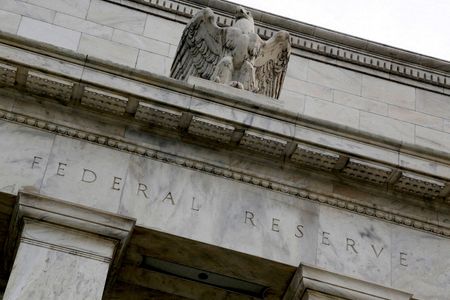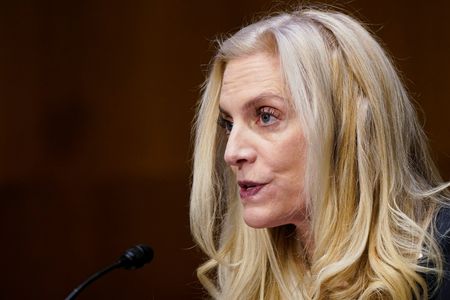By Howard Schneider and Bianca Flowers
WASHINGTON/CHICAGO (Reuters) -The chances of a “soft landing” for the U.S. economy appear to be growing, Federal Reserve Vice Chair Lael Brainard said on Thursday, and the central bank is “probing” for the right level of interest rates to control inflation without tanking employment.
“Inflation has been declining over the past several months against a backdrop of moderate growth,” Brainard said at the University of Chicago’s Booth School of Business, noting a “significant weakening in the manufacturing sector,” a moderation in consumer spending, and other data pointing to “subdued growth” in 2023.
The slowdown is, for the most part, welcome. The Fed raised its benchmark overnight interest rate rapidly last year, from near-zero in March to the current 4.25%-4.50% range, to restrain inflation that climbed to 40-year highs.
That aggressive policy tightening is beginning to slow demand as intended, Brainard said, but the full impact is yet to come.
“We’re now in restrictive territory, and we are probing for the sufficiently restrictive level” to be confident that inflation is headed back down to the Fed’s 2% target, Brainard said.
Brainard’s remarks, among the last from a Fed policymaker before the Saturday start of an official quiet period ahead of the central bank’s next rate-setting meeting on Jan. 31-Feb. 1, did not give any explicit guidance on how high she feels interest rates may ultimately need to go.
In December, Fed policymakers as a group signaled the policy rate will need to rise to at least 5.1%; financial markets are pricing for the Fed to stop just short of 5%.
But Brainard did appear to ratify market expectations for the Fed’s upcoming rate hike to be a quarter of a percentage-point, a downshift from December’s half-point rate hike and from the four preceding 75-basis-point rate hikes.
The “logic” that drove the Fed to slow its rate-hike pace in December, in order to have more time to assess the impact of policy, “is very applicable today,” Brainard said.
In separate remarks on Thursday, New York Fed leader John Williams said he was not ready to prejudge the outcome of the upcoming Fed meeting, but in comments that called for more rate rises, he did not push back on market expectations of a quarter percentage point increase.
“With inflation still high and indications of continued supply-demand imbalances, it is clear that monetary policy still has more work to do to bring inflation down to our 2% goal on a sustained basis,” Williams said in a speech to the Fixed Income Analysts Society in New York.
“Bringing inflation down is likely to require a period of below-trend growth and some softening of labor market conditions,” Williams warned. “Restoring price stability is essential to achieving maximum employment and stable prices over the longer term, and it is critical that we stay the course until the job is done,” he added.
‘COMPETING’ RISKS
Earlier on Thursday, Boston Fed President Susan Collins was more explicit.
“I anticipate the need for further rate increases, likely to just above 5%, and then holding rates at that level for some time,” Collins told a conference organized by the Boston Fed, echoing a near-unanimous sentiment expressed by her rate-setting colleagues in recent weeks.
She also said she feels smaller rate hikes are now appropriate as the Fed manages “competing” threats: “the risk that our actions may be insufficient to restore price stability, versus the risk that our actions may cause unnecessary losses in real activity and employment.”
Brainard similarly, though less directly, called out the potential risk to the labor market as rates increasingly restrict the economy, a shift from last year when fighting inflation was the Fed’s clear priority.
“Now we’re in an environment where we’re balancing risks on both sides,” she said.
She also pointed to trends in prices, wages and margins that indicated inflation, which by the Fed’s preferred measure is running at almost three times its 2% target, was slowing and could well continue doing so.
The U.S. unemployment rate, meanwhile, is at a low 3.5%.
“Recent data suggests slightly better prospects that we could see continued disinflation in the context of moderate growth,” Brainard said. Still, she said, “it is a very uncertain environment and you can’t rule out worse trade-offs.”
Even as the Fed parses the progress it has made on inflation, she said it would “stay the course.”
“Even with the recent moderation, inflation remains high, and policy will need to be sufficiently restrictive for some time to make sure inflation returns to 2% on a sustained basis,” Brainard said.
(Reporting by Howard Schneider, Bianca Flowers, Lindsay Dunsmuir, Ann Saphir and Michael S. Derby; Editing by Andrea Ricci and Leslie Adler)


